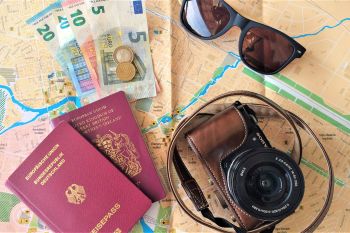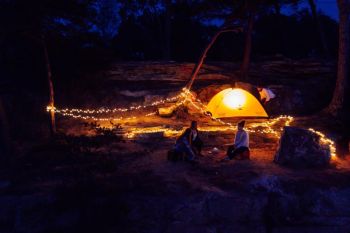
Learning to snowboard is both enjoyable and simple. Chris Rogers, a professional snowboard instructor, walks beginners through the fundamentals of snowboarding in this video series. Chris walks you through the basics of snowboarding for the first time. The series begins with the basics of your equipment and concludes with stringing turns together on the hill. Make sure to watch all of the videos and share them on social media, tagging anyone you know who is interested in learning to snowboard.
Stance, Snowboard Gear, and Strapping In
So let's get this party started! As a beginner snowboarder, one of the most important things to master is making sure your boots fit properly. When trying on boots, only put one pair of socks on and make sure the boot is empty. Beginners frequently wear multiple pairs of socks in order to stay warm, but this is unnecessary. With just one pair of socks, modern snowboard boots keep your feet warm and comfortable. To ensure a secure fit, make sure your heel is at the very back of the boot. Ask your snowboard instructor or a rental shop employee for assistance if you're not sure if your boot is on properly.
When it's time to put your snowboard on, the first thing you'll want to do is figure out your "stance." When you're sliding downhill, your stance is the direction you're facing. Regular and goofy snowboard stances are available. Your left foot is forward in a regular stance, while your right foot is forward in a goofy stance. There is no one-size-fits-all snowboard stance; it all depends on how you feel.
It's critical to understand the fundamental components of a snowboard so you can follow along with your instructors. The nose and tail of a snowboard are referred to as the nose and tail, respectively. There's also the heelside edge (when strapped in, the side edge closest to your heel) and the toeside edge (the side edge closet to your toes when strapped in). Bindings are another important component of a snowboard; they connect your feet to your board. They're usually made of plastic or metal, and they have a ratcheting strap system to keep them in place.
Find a flat service to strap into your snowboard. You don't want to be on a hill because it will only complicate things. Place one foot in the binding, feed the "ladder" into the ratchet, and tighten by cranking the ratchet. Simply pull the buckle away from the ratchet to release it.
It may seem trivial, but it's also important to consider how you transport your snowboard when you're not riding it.
Skating, gliding, standing up, and moving uphill
When you're not going downhill, it's common to walk with your front foot secured and your back foot propelling you forward. Skating is how snowboarders get on and off chairlifts, as well as how they move around on flat surfaces. However, unlike skateboarding, you usually push with your back foot behind your heelside edge. The video above goes over how to skate and glide on snow in greater depth.
You'll probably spend a lot of time on the ground when you're first starting out. That's why knowing how to stand up from a seated position with both feet strapped in is crucial.
Bend your knees and scoot your board towards your behind from a seated position. Now, using your quads and core, lean forward with your upper body and stand up. Try it out a few times on the flats so you don't have to worry about sliding downhill. Flipping onto your knees and toeside edge is another way to stand up. To see this in action, watch the video above.
Although the purpose of snowboarding is to glide downhill, it is occasionally necessary to move uphill while strapped in. Face uphill and dig your toeside edge into the snow to accomplish this. Then, as if you were jumping rope, keep hopping forward.
Stopping, Turning, and Riding a Chairlift
You must first learn how to stop and control your speed before learning how to go straight downhill. Begin on your heelside, with your board perpendicular to the hill, and try to find a balance point where you can slowly move downhill without moving side to side. Your toeside edge should be slightly off the snow in a mid-squat. While facing uphill, you can also stop and slow down by balancing on your toeside edge with your heels off the snow. In the video above, Chris Rogers demonstrates how to do it.
It's time to learn how to turn once you've mastered controlling your speed on both your toe and heel edges. Rogers suggests beginning with "garlands." A garland is a half-turn that uses the same skills that you learned to stop with. You can move into full C turns after you've made a lot of garlands on the hill. You'll learn how to shift your weight from your toes to your heels to complete a full C turn (and vice versa). You'll be able to make a full S turn once you've linked together a few full C turns. You're now officially a snowboarder!
Learning to ride a chairlift is an often overlooked but crucial part of learning to snowboard. Skate up to the area where you'll be told to wait to get to the chairlift. Skate up to the loading area after a chair passes and it's your turn. To make it easier to sit, move your back foot over to your toeside edge. Simply sit down and scoot to the back of the
chair when it arrives. Place the safety bar down once you're safely seated and enjoy the ride up.
To safely exit a chairlift, keep your snowboard pointed straight. Your snowboard's nose should be pointing directly at the unloading ramp. Place your board down as the chair enters the unloading area and stand up with your back foot on your snowboard between your bindings. To clear the unloading area, glide away from the chair.
Fundamentals in Balance
Flex your ankles and knees and jump straight up to practise the two-footed hop. As you descend, flex again and consider a soft landing.
When doing an ollie, shift your weight to your back foot and then spring off the tail. This is called an ollie because you can do it with your front foot and spring off the nose.
Consider landing softly with both feet once more.
On a Snowboard Movements
The more you tilt your board, the more you engage your edge through the turn.
A twist is created on the snowboard by flexing one ankle and extending the other. A twist aids in the smooth start of turns.
Pivot is the snowboard's rotation, which helps the board skid through the turn.
You can control the pressure of the snowboard by shifting your weight between your feet. One of the most important aspects of learning to turn is keeping your weight centred over the front foot.
So, how do these moves help you improve your snowboarding skills? Tilt allows you to control speed by carving turns, as well as explore freestyle carving tricks like the euro-carve. Twist allows you to start turns more smoothly, no matter how big or small they are, and it becomes increasingly important as you improve and begin exploring the mountain. Pivot aids in the shaping of turns and is the foundation for snow spins such as 180s and 360s. Pressure refers to how you move your weight on a snowboard and is the foundation for nose-presses, tail-presses, butters, and jumps. Everything you do on a snowboard is basically made up of these four movements, from your first turns to a double cork 1080.
How to Disembark from a Chairlift
You can begin by sitting on a bench with your buttocks angled against the chair and your board straight. Place your back foot on the stomp pad or against the back binding as you stand up with your weight on your front foot. To glide away, keep your head up, look forward, stand up, and push off the chair.
It's time to take a ride on the chairlift. Make a plan with the other people on the chair to unload in different directions when you're riding up.
Remember to keep your board straight and your butt angled on the chair. Stand with your front foot on the stomp pad or against the binding and your back foot on the stomp pad or against the binding. Maintain a forward gaze as you stand up, push off the chair, and glide away.
Before you skid to a stop, make sure you're far enough away from the chair and other people. If you fall while unloading, the lift operators will slow and stop the chair to allow you to safely exit. If you follow these guidelines, you'll be able to exit the chairlift with ease.






